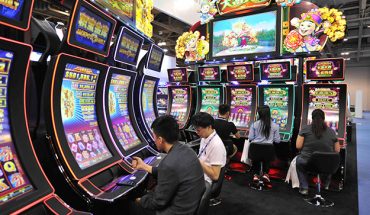Slot machines are a staple of casinos, attracting players with their vibrant designs and the allure of potential jackpots. One intriguing aspect of these machines is the varying payout frequencies among them. Several factors contribute to why some slot machines pay out more frequently than others, and understanding these can enhance the player experience. Firstly, the payout frequency of a slot machine is largely determined by its Return to Player RTP percentage. RTP is a theoretical figure that indicates the amount of money a slot machine will return to players over an extended period. For instance, a slot machine with an RTP of 95% is expected to return 95 for every 100 wagered, while the remaining 5 constitutes the house edge. Machines with higher RTP percentages tend to pay out more frequently, as they are designed to return a larger portion of wagers to players. Consequently, players may find that machines with RTPs above 96% offer more frequent payouts, although the actual experience can vary due to the nature of random number generators.

Another significant factor influencing payout frequency is the machine’s volatility or variance. Volatility refers to the risk level associated with toto slot. Low-volatility machines offer frequent, smaller payouts, making them appealing to players who prefer a steady stream of wins. These machines typically feature more pay lines and lower jackpot amounts, which increases the likelihood of hitting winning combinations. In contrast, high-volatility machines tend to have less frequent payouts but can reward players with substantial jackpots when wins do occur. Players looking for excitement and the chance to win big might gravitate toward these high-risk machines, despite the longer stretches without payouts. The design and mechanics of the slot machine also play a crucial role in determining payout frequency. For example, some machines are equipped with special features like bonus rounds, free spins, and progressive jackpots that can influence how often players receive payouts. Machines that include these features may attract more players, leading to a perception of increased payout frequency.
Additionally, the configuration of symbols on the reels can affect how often players win; machines with more symbols or those that feature wild symbols can create more opportunities for winning combinations. Moreover, casinos may strategically position slot machines based on their payout frequency to influence player behavior. For instance, machines that are known to pay out more frequently might be placed near entrances or in high-traffic areas to draw in new players. This strategy can create an atmosphere where players feel lucky and inclined to play more, potentially increasing their overall gambling activity. Many players are drawn to machines that appear to be hot or on a winning streak, regardless of the machine’s actual payout statistics. This phenomenon can create a feedback loop where players flock to certain machines, reinforcing the belief that they are more likely to win. In conclusion, the frequency of payouts in slot machines is influenced by various factors, including RTP percentages, volatility, machine design, casino strategies, and player psychology.






